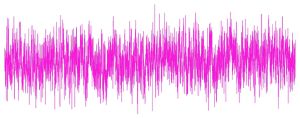WindLab Workbench
Introduction
The WindLab Workbench provides a modern random wind velocity simulation workflow for LabRPS. Mainly this means all tools to make an simulation are combined into one graphical user interface (GUI).
Random Wind Velocity
Random wind velocity refers to the fluctuating, unpredictable variations in wind speed and direction over time, which can be modeled as a random or stochastic process. Unlike steady or constant wind flow, random wind velocity accounts for the inherent variability and turbulence present in natural wind patterns. This randomness arises from a combination of factors, including local atmospheric conditions, terrain features, and large-scale meteorological influences. In the context of engineering and science, random wind velocity is of significant importance due to its impact on a wide range of systems and structures. It is typically characterized by statistical properties, such as mean wind speed, standard deviation, and power spectral density, which describe the magnitude and frequency of variations in the wind. One of the most prominent applications of random wind velocity is in the design of buildings, bridges, and other structures. Engineers must account for the dynamic loads caused by wind gusts and turbulence when designing these structures to ensure safety and stability. Key applications include:
Wind Load Calculations
Engineers use probabilistic models of wind velocity to estimate the load that wind will impose on a structure. The variability in wind speed is factored into design codes and safety standards to ensure that structures can withstand extreme wind conditions (e.g., hurricanes, tornadoes, or strong storms).
Dynamic Response Analysis
Structures such as tall buildings, bridges, and towers experience oscillations when subjected to random wind velocity. Understanding the stochastic nature of wind allows engineers to model and predict the **dynamic response** of these structures to mitigate the risk of resonance or failure.
Vibration Analysis
Wind-induced vibrations are a critical concern in the design of long-span bridges, skyscrapers, and offshore platforms. Random wind velocity is modeled to simulate the effects of wind on structural resonance and to prevent damage due to vibrations.
wind energy generation
Random wind velocity is a crucial factor for optimizing the performance of wind turbines. Wind energy models use stochastic wind speed data to predict the power output of turbines over time:
Wind Farm Optimization
Engineers use probabilistic models of wind velocity to optimize the placement and operation of wind turbines within a wind farm. Understanding the variation in wind speed helps maximize energy production while minimizing mechanical wear and tear.
Power Output Prediction
The fluctuating nature of wind velocity affects the power generation efficiency of turbines. By modeling wind as a random process, scientists can predict the availability and variability of wind energy at a given location and optimize turbine settings for improved efficiency.
Weather Prediction
Random wind velocity plays a critical role in weather forecasting, particularly for short-term predictions. Wind patterns, including turbulence and gusts, are used to predict local weather changes such as storms, precipitation, and temperature variations.
Air Pollution Dispersion
Wind velocity is a key factor in determining the dispersion of pollutants in the atmosphere. Environmental scientists use stochastic wind models to predict the spread of pollutants from industrial sources, wildfires, or accidents. This helps inform regulatory measures and emergency response plans.
Climate Modeling
Random wind velocity is also an important factor in long-term climate models, where wind patterns influence ocean currents, temperature distribution, and global weather systems.
Aerospace engineering
Random wind velocity is crucial for designing aircraft, drones, and other vehicles that operate in turbulent atmospheric conditions:
Flight Simulation
Engineers simulate the effects of random wind turbulence on aircraft during takeoff, flight, and landing. These simulations help improve aircraft design for safety, stability, and comfort under varying wind conditions.
Landing and Takeoff Procedures
The impact of wind gusts and turbulence on aircraft performance is carefully modeled using stochastic wind data to develop safe operating procedures, especially in challenging weather conditions.
Workflow
The steps to carry out a wind velocity simulation are:
- Preprocessing: setting up the simulation requirements.
- Intalling the required plugins: Every simulation feature in WindLab are provided by plugins. So appropriate plugins should be installed first.
- Creating a simulation.
- Adding a simulation method (a simulation model).
- Adding every WindLab Feature that is required for the selected simulation method.
- Simulation: running the simulation.
- Postprocessing: visualizing the simulation results from within LabRPS, or exporting the results so they can be postprocessed with another application.
Workflow of the WindLab Workbenchm
Menu: WindLab
Create Simulation: Creates a new container for a numerical simulation.
Create Feature: Creates a new container for a mechanical analysis. If a solid is selected in the tree view before clicking on it, the meshing dialog will be opened next.
Preferences
Preferences...: Preferences available in WindLab.
Tutorials
Tutorial 1: WindLab Tutorial; Simulation of random wind velocity on tall building.
- Getting started
- Installation: Download, Windows, Linux, Mac, Additional components, AppImage
- Basics: About LabRPS, Interface, RPS Objects, Object name, Preferences, Workbenches, Document structure, Properties, Help LabRPS, Donate
- Help: Tutorials, Video tutorials
- Workbenches: Std Base, WindLab, SeismicLab, SeaLab, UserLab, Spreadsheet, Plot, Web
- Hubs: User hub, Power users hub, Developer hub


